Riding through a manufacturing belt has its rewards – the roads are laid out like duvets, nary a wrinkle; crouch a bit low into the wind and you can open throttle till your heart reaches your mouth. But there is a price to pay – vast swathes of the landscape, what would have once been picturesque, are windowless concrete warehouses or manufacturing hubs with all the scenic value of toppled matchboxes. ‘You can’t have it all’ you console yourself and thole on, racing the wind.
Dawdling trucks of unending lengths ferrying building materials for new factories or other industry supports mar your going in places. More than once I came across these crawling centipedes on rubber wheels transporting Jurassic-like limbs which turned out to be blades of windmills. A brisk walker could overtake them; I marvelled at the drivers’ patience and gawped at them in their kitted out cabins with multi-hued LED lights blinking around images of everyone from gods and kids to Sunny Leone. The complete family. What looked like whole tresses yanked out of skulls flowed from their windows scaring away the evil and other eyes. Approaching from a distance at high speeds these looked like frantic signalling; there ought to be a law against them, I thought for the umpteenth time. Most were intently watching stuff on mobile phones held against the light. Horn ok please, went the forgotten, ancient plea. I pass them quietly worried about any jerky reaction when rudely wakened from reveries.
The distance from Ahmedabad, the capital city of Gujarat, to Dhordo village in the Rann of Kutch was 410 km and I knew I would make it in good time because of the good roads the state was famous for. As always the only delay was in exiting the city which was buzzing with office-going early birds. Billboard-ballyhoo marking the long-over visit by the Trumps loomed over electric posts, shopping malls and signals. An obscenely large one stood like an eyesore across the river from the Sabarmati Ashram, in my face, outside Mira behen’s little hutment on the other side of the courtyard from the house where the Mahatma lived with his wife. In fact I spent more time at Mira behen’s place and ‘Melania behen’ started to ring in my ears. I left. The intersections were crammed till Sanand which lay at an unbroken straight 20 km from Ahmedabad where I had spent the night with an old friend who was a faculty in the central university there.
Traffic tapered off at Sanand but the roads were broken for some distance with speedbreakers strewn around for no apparent reason other than probably excess metal and tar which proved too cumbersome to be carted back by the contractor. Too many speedbreakers is also the problem when there are flyovers underway – rumble strips mark the point of diversion riding over which feels variously like a series of soft slaps on your back to somebody shaking you by the seat of your pants. Flyovers were springing up like vandalism ideas after a pep pill all over Gujarat. Save for these minor incursions into smooth cruising, the route was largely decent, wide tarmac led out from the western state of Gujarat towards the west-most edge of the country, the Rann of Kutch, where I was headed.
I had started from Delhi two days ago and my first stop was Udaipur 670 km away. Though I had changed my motorcycle seat to the touring gel option before my Kerala ride two months ago, bypassing Ajmer my back began to ache. I fidgeted around and slid back into slightly broader contours for ephemeral, if any, relief. Then, the desert landscape of Rajasthan, approaching the border with Gujarat with the Aravallis fringing the misty horizon, is nothing short of mesmerising. They rose like green skies and amid all the barrenness have an analgesic quality to them. The pain soon disappeared like the discomfiture caused by a pessary.
After a day in Udaipur, I proceeded to Ahmedabad 265 km away which meant less than half a day on the road. Passing a tunnel, I stopped by a restaurant for early lunch. When the waiter corrected my ‘roti’ to ‘chapati’ I rightly assumed I had entered Gujarat. Lighting a post-prandial cigarette outside, a pleasant guy with a ready smile approached me. Since I bought my Interceptor 650 three months ago, I had been getting queries from strangers about price and mileage but this was the first time somebody asked me horsepower, kerb weight, reserve capacity and braking distances as well. Gaurav Yadav, a truck driver plying between Delhi and Gujarat, was a serious motorcycle enthusiast by virtue of some years spent in Pattambi in north Kerala.
“My boss had a vintage Bullet motorcycle and he would talk about it all the time,” he recalled smiling at an eidetic memory. “Sometimes even talk to it.” When the boss was travelling, the unstuffy Yadav was entrusted with taking it out for a spin to keep the battery running.
“Most of the people from Kerala seem to own a Bullet,” he said. “Almost like the company was set up for you guys only.”
Before departing he told me he missed Kerala for the zesty, good-looking women and easy availability of liquor. Gujarat was a dry state which meant by the time you managed to procure a bottle of alcohol through proper channels, it would be time to open the second. I was taking no chances and carried my own supply.
I am not sure about any connection between missing alcohol and abundant business brain but the Gujaratis are famed for their commerce acumen. The top business families of India are from Gujarat and not just for the prime minister next door. On firm, even terrains stood factories, undulating mountainsides had windmills and nearing the sea where the marshlands began were the flats producing most of India’s salt. Freshly dried salt lay in little white pyramids far into the vast expanses of square fields. These were worked almost exclusively by a community called the Agariyas. Once the heavy monsoons are over, they dig wells to pump out the briny groundwater to fill these fields. The fierce sun then evaporates the water leaving behind salt crystals.
Approaching Bhuj, I had my first ever sighting of salt plains and salt mountains and I was excited. I rode into an open field where a pump was working and some kids wading in the slush trying to net some swimming creatures with towels. They ran away seeing me but returned soon enough with a stooping manikin in tow. I didn’t know whether he understood that I was just a passerby who was more fascinated by him than he would be with me. My enquiry whether he was an Agariya was met with vigorous, unctuous nods, a wide white grin parting his dark face. I gave the kids a packet of biscuit and asked them if I could take a photograph and they ran away again. This time they didn’t return.
After Bhuj, the road plunges into arid territory and there is no petrol pump till Khevda 105 km away; Dhordo is 25 km short. Nearing Dhordo I saw several oases of temporary tented dwellings marked by high boundary walls – the Rann of Kutch festival was coming to an end. I headed towards the biggest one where I was stopped at the entrance by big burly who flexed his biceps and frowned. Though the manager later arranged for my motorcycle to be parked inside the tent city, cosy hospitality properties in India are still grappling with the possibility of sooty motorcyclists holding a reservation. An illustrious attempt at glamping, my tent had it all, including a full length mirror. Man, I was a sight – it wasn’t hard to see where all the grime and smoke kicked up by the trucks went. Lakshay, the young chap who checked me in was a student at an airline training institute in Dehradun; I really hope to bump into him in some flight in the future. Though my mind was on a warm shower and eyes on the widest, softest, whitest, most luxurious bed this side of the Tropic of Cancer which I had passed on my way, Lakshay told me about a sunset point not very far and not the usual one where tourists flock to.
The sun and the desert are on an eternal courtship – like us humans, both try to impress each other by looking their best when together. Their dates give birth to many apostates with faith in just beauty and goodness. Conceit, selfishness, ego, greed, snobbishness, propensity to lie and cheat, rage, deceit, all leave if you spend enough time just looking at this fabulous couple, apogee of complementary strengths. The point was a more sandy stretch than salt and the track was soft in the dew of the desert dusk. I wasn’t even sure whether I had got the place right but it didn’t matter. I was looking at a panoptic view of the entire horizon with the sun blazing a quality of umber you wouldn’t get in many places. Back at the tent city I slept like a collier at siesta.
By dint of having my own transport, I was the first one out the next morning for the sunrise; other guests flocked around the bus clamouring for the driver who actually stood in their midst sipping tea. The guy had lent me a rag to dry my motorcycle seat which was dripping from the condensation at night; I had taken my directions from him this time to the view point.
“You will be stopped at the border checkpoint,” he had warned me. I was.
“Sat Sri Akal,” I greeted the Sikh guard in the cheeriest I could muster at 5.30 AM. I saw his face brightening up and peering at my Delhi registration plates he grinned. These Sardars are motorists at heart.
“Riding from Delhi!” He exclaimed to his drowsy colleague as if to wake him up which didn’t work. He waved me on.
The Great Rann, which slowly opened with the dawn, is over 700 square kilometres of a featureless lunar landscape. One of the largest salt deserts of the world, this is also a World Heritage Site. It lies like a humungous white canvas which can take on – and give – any impression, an arresting blankness. As day broke, others from the property began trickling up the tower gallery – a sturdy fabrication with zigzagging ladders and handrails with a platform at the top. The sun was stuck behind clouds and emerged later lighting up the Rann like a suddenly working flashlight. Understandably, the view is nothing short of ethereal under the full moon which was more than a week away. The first cases of Corona virus were also reported from Rajasthan the previous day which I would be passing through on my way back. ‘Return before a complete lockdown,’ a friend with the Intelligence Bureau had warned. But the lockdown and complete sealing of borders took another few weeks to materialise. I went down the gallery, got on my motorcycle and ventured into the desert – which I later found was not just banned but dangerous too.
But you don’t really get that far on the desert anyway – it is swampy beneath the few inches of salt cover. I parked my motorcycle about a kilometre from the tower and took photographs. Like little specks in the distance I could others too had followed my lead on foot. ‘Walking is ok, not on motorcycle,’ a distraught BSF soldier informed me later. As the sun rose higher, it began to get really warm and I had to squint in the brightness. The people had disappeared and from somewhere I could hear a shrill whistle which I dismissed to be of an overly zealous tour guide.
The salt began to get mushy and my motorcycle had dipped a few inches into the ground. I packed my cameras quickly and got on which sank it further, a bit throttle and we were a full two feet inside the ground kicking up a mix of dark brown mud and white crystals. The same whistle I had ignored earlier now gave me confidence – somebody was watching if I were to be bogged down. Creating intermittent craters of up to three feet deep, I managed to extricate myself from the area but not absolve myself of some travesties. The whistler – actually a soldier in full machine-gunned gear – saw to that.
I had imagined the Rann salt plains to be like the Bonneville Salt Flats in Utah where I could set some speed records and I laughed thinking about it when I rode to Khevda, 25 km away, the salt crystals still clanging against my mud flaps. Though the road was gravelly, it was straight for many kilometres and I hit an easy 140km before easing down for the occasional incoming traffic. I was reminded of the More plains between Leh and Sarchu; here the grassy peaks were replaced by sweltering swamplands. I sped chuffed about my land, an unending marvel, a diorama that changed around every bend. Contentment doesn’t augur well with me but I felt privileged to be of here, out there. From Khevda I rode to Kala Dungar, the highest point of Kutch not before losing my way and reaching the India Bridge. I was sent across the approach to no man’s land with express instructions not to take any photographs; I didn’t not wanting to flout rules twice in a single day.
At Kala Dungar I made somebody wrap a turban on me and hired field glasses from another. The 400 year old Dattatreya Temple was more a resting place than one of obeisance for the visitors. A picayune hill spot of retired salt workers and camel minders, the ride up is scenic through tucked away villages where kids throw their hands up for high fives – slow down if you intend to return it, these tykes have really iron sheathed palms. Returning, stopping to take photographs of a magnetic field area, Imran, a shepherd, emerged from behind the thickets with his gambolling wards. He offered me wild berries for taking photographs of his on my motorcycle. He didn’t even want to see the pictures and went away berating his plangent flock for whatever. First time someone blindly trusted my portrait-taking abilities.
Back at Khevda, before returning to Dhordo, I stopped for tea at Bhiya Ji’s Tea ‘Stole.’ A trucker halt replete with charpoys and unspoken bonhomie, everyone smiled at me like a regular. The dialect was very difficult to follow and I just kept nodding; my much-wanting Hindi would have struck them as an outcome of dysphasia, probably. Though I am wary of rural petrol pumps, I tanked up from the one here even though I had enough to reach Bhuj the biggest town close by.
I was in Kutch, the largest district in the country, and the Rann was just the beginning.



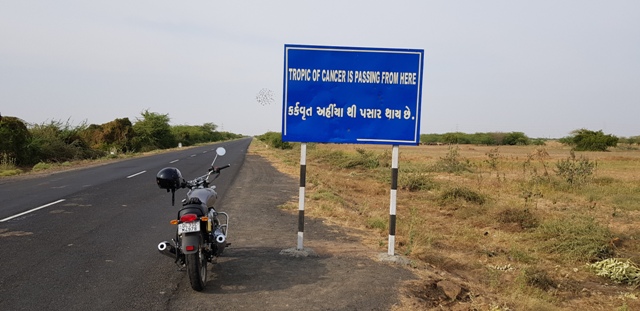

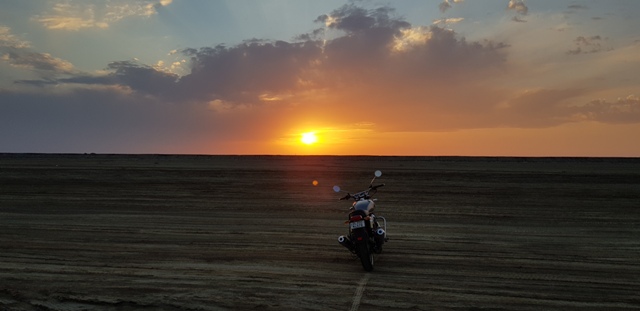
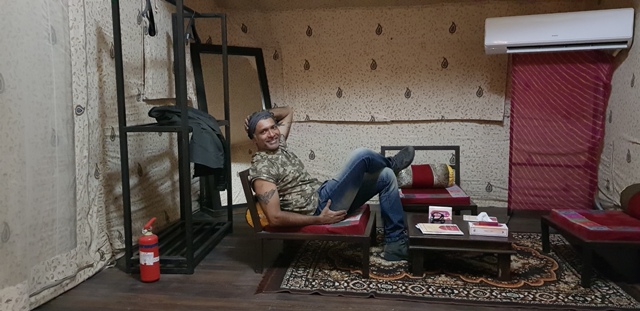
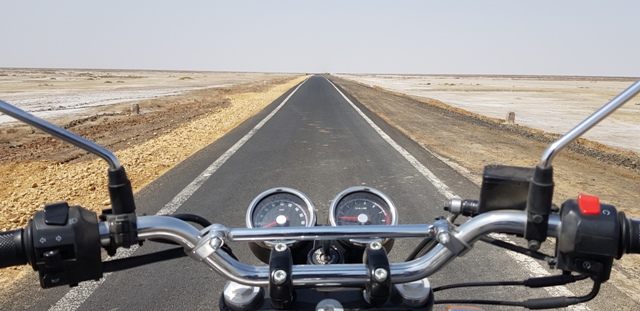
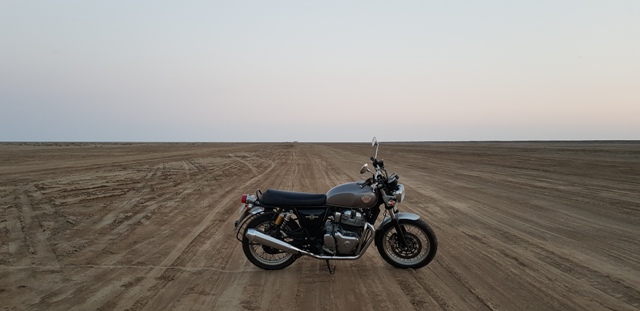
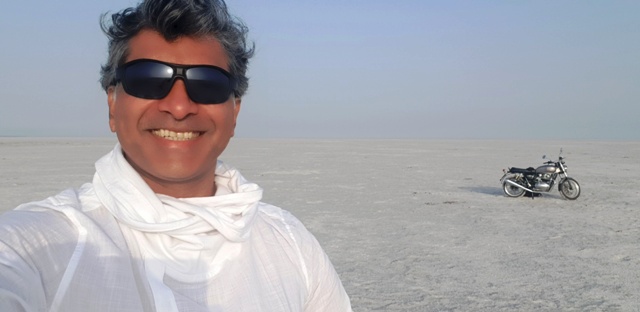
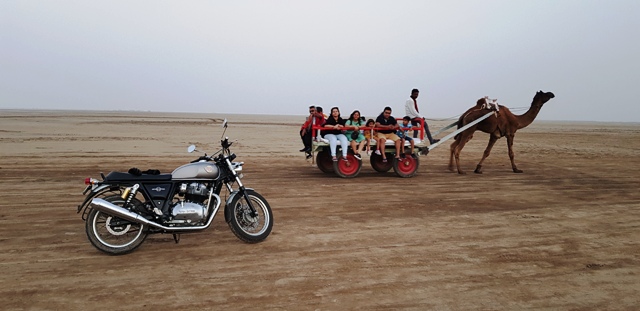
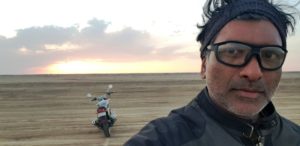









Hi Thommen,
I really enjoyed this blog. You write so well. I was hooked from the start. In love with all these photographs. Keep up the good work 🙂
Thank you, Stella. I hope you enjoy reading the others too 🙂